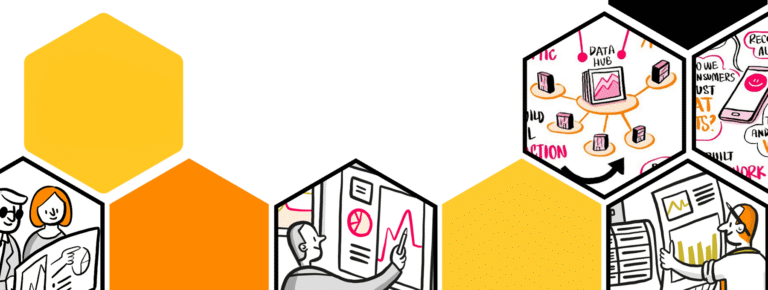In the modern business landscape, data, specifically customer data, has become a pivotal asset. When effectively utilized, it can rapidly propel a company’s growth trajectory. However, the common practice of storing customer data in silos, segregated by the teams managing the workflows, can hinder the organization’s ability to leverage this data to orchestrate a seamless user experience.
Enter the Customer Data Platform (CDP). This innovative technology promises to consolidate customer data in one place, paving the way for a unified and relevant customer experience across all touchpoints.
Download our free CDP ebook here »
TABLE OF CONTENTS
But what exactly is a CDP?
The CDP Institute defines a CDP as “packaged software that creates a persistent, unified customer database that is accessible to other systems.”1 This definition highlights three key characteristics that set CDPs apart from other technologies:
1. “A persistent and unified customer database”: The primary function of a CDP is to create a single view of the customer by capturing and integrating individual-level data from various systems over time.
2. “Packaged software”: CDPs are typically out-of-the-box software solutions, which significantly reduce the level of engineering required to implement the technology compared to other systems. This empowers marketers by increasing control and reducing the cost, time, and risk associated with data lakes built from scratch.
3. “Accessible to other systems”: The software allows data to be exported to any endpoints for reporting and analysis, and crucially, to manage customer interactions.
Related reading: Customer Data Platforms
While the promise of a unified customer view isn’t new, there are significant differences between a CDP and other software platforms like Customer Relationship Management (CRM) and Data Management Platform (DMP). In essence, CRM can be thought of as a data source for your CDP, unifying that data with others to create a comprehensive customer profile. On the other hand, DMPs can be seen as a destination for your CDP to push your audiences to, enabling the continued leveraging of anonymous-based advertising platforms like Demand-side Platforms (DSP).
Indeed, a CDP can be considered the Holy Grail for a customer-centric business. Regardless of their data maturity levels, businesses can benefit from implementing a CDP on top of their current tech stack. CDPs can capture, unify, and enrich customer data from all sources. When harmonized, this data creates individual-level records, forming a single view of the customer. This allows the organization to better understand its prospects and existing customers and interact with them in a relevant and timely manner.
Moreover, CDPs can access both internal and external systems, enabling brands to control their users’ experience across all touchpoints. As a result, customer data can be utilized for various purposes, including email marketing, paid advertising, tailoring customer service, informing sales representatives, and more. In other words, data can be actioned upon by the entire organization.
Related reading: Case study – Moomin
Three simple strategies to quickly win with your CDP
Implementing a CDP is a long-term project, closely tied to your organization’s overarching roadmap. While there are many strategies that your CDP can support, there are some ‘low-hanging fruits’ you can rapidly implement to be data-centric and drive return. Here are three easy-win strategies:
1. Know your customers
The first phase of implementing your CDP involves consolidating all your customer data. A CDP helps you connect all the dots to gain a 360 view of your customers and their touchpoints with your brand. This comprehensive understanding of your customers informs how to be more efficient at communicating with them, while staying within their trust circle.
2. Automate and personalize
Automation is another easy win. This involves automating transactional and marketing emails. All transactional email triggers can be automated from or by your CDP and pushed out in nearly real-time. On the other hand, marketing emails can also be automated to inspire, convince, retain, or upsell your customers.
3. Control their experience
With a unified view of your customer, you can ensure their experience is controlled across all touchpoints. Having a holistic view of all touchpoints, from marketing to sales to customer services, in one place can prevent you from making simple mistakes. This lets you not only be more efficient but also build a robust relationship with your customers by showing them you know and care about them.
In conclusion, adopting these “low-hanging fruits” strategies will drive your organization to be much more customer-centric and quickly see a return on investment in your new tool. A CDP can help you gain more insights into who your customers are and how to best approach them, offer them personalized and real-time communication, and control their experience across all touchpoints.
How Vaimo can help
With two decades of experience in ecommerce, experience management, and customer data-driven optimizations, we can help you unlock the full potential for driving business results by optimally using your customer data.
We guide you in clarifying your vision and ambitions and defining the key use cases; we guide you in evaluating and selecting the right solution and future-proof martech and data infrastructure. We develop a comprehensive data strategy, ensuring data governance and compliance with a realistic roadmap for success.
By providing continuous support and empowerment, we help you optimize your customers’ experience across their whole journey through actionable insights and real-time triggers. In parallel, we ensure your data strategy stays up-to-date and aligns with your evolving business needs.
Are you happy with your customer data strategy? Take our free customer data assessment to find out where you stand.
References
1 – CDP Institute







